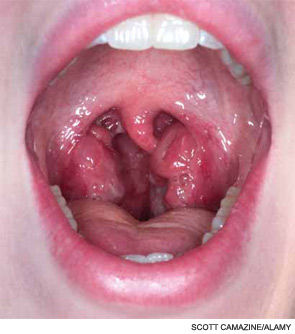For otolaryngologists seeing increasing numbers of children with sleep-disordered breathing, whether or not to refer children for a polysomnography (PSG) prior to surgery is not a decision easily made. Currently, only about 10 percent of otolaryngologists request a sleep study in children with sleep-disordered breathing prior to surgery (Laryngoscope 2006;116(6):956-958).
Explore This Issue
August 2011Although limited resources and lack of access to overnight sleep centers are well-known practical limitations to widespread use of sleep studies, otolaryngologist also need to better understand when sleep studies are necessary.
This need is highlighted by data estimating that sleep-disordered breathing accounts for most of the estimated 530,000-plus tonsillectomies performed each year in the U.S. for children under 15 years of age (Natl Health Stat Report. 2009;11:1-25), along with the perception by some that a good many of these may be unnecessary surgeries that could have been avoided with more accurate diagnosis of sleep-disordered breathing conditions.
"The average success rate of a physician to accurately diagnose a sleep-disordered breathing using clinical skills alone is between 60 to 65 percent, which means that 30 percent of children sent to surgery do not need surgery," said David Gozal, MD, a pediatric sleep specialist at the University of Chicago Medical Center. "That is a wrong way to approach medicine, especially since you don’t know if the disease is present or whether the risk-benefit of doing surgery is justified."
To help otolaryngologists determine the best use of PSG when faced with a child who has sleep-disordered breathing and is being considered for tonsillectomy, the American Academy of Otolaryngology-Head and Neck Surgery (AAO-HNS) recently published practice guidelines.
As with previous AAO-HNS guidelines, these were developed by a committee composed of experts from the numerous specialties that manage children with sleep-disordered breathing, including anesthesiology, pulmonology, otolaryngology, pediatrics and sleep medicine, and are meant only to guide clinical practice, not to replace clinical judgment.
Although the recommendations were made by this multispecialty committee, the guidelines specifically target otolaryngologists and are not meant to be comprehensive for all practitioners who care for children with sleep problems, said coauthor Ron Mitchell, MD, who is also professor and chief of pediatric otolaryngology at UT Southwestern Medical Center and Children’s Medical Center in Dallas.

Best Use of Limited Resources
The guidelines are driven in part by the need to help otolaryngologists make the best use of limited resources, Dr. Mitchell said. "We know that there are not enough resources to provide a sleep study for every child prior to tonsillectomy," he said. "We are not saying that every child with a sleep problem who is due to undergo a tonsillectomy should have polysomnography, but that there are certain categories of children for which [PSG] is extremely helpful."
Leave a Reply